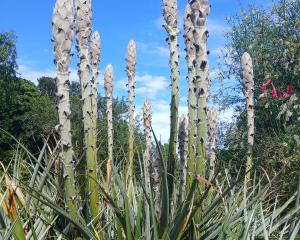In early 2018, the curtain rose to reveal the Botanic Garden’s impressive corpse plant, Amorphophallus titanum. It became an overnight sensation, with thousands of people flocking to experience the sight and smell of this exotic plant.
It took ten years to slowly grow and gain strength from a golf ball-like corm to a weight of 32kg when it was ready to showcase its unique flower for the first time - a magnificent specimen with an unforgettable, pungent odour.
When the curtain dropped, many wondered how long it would be before it would flower again.


During the second blooming, pollen collected and stored from the first flowering was used to pollinate the flower and the seed produced was collected and sown, producing numerous seedlings which are being grown on and will be shared with other botanic gardens.
As for our big star, after it bloomed and spent several months nurturing the developing seed, it went into a dormant state to conserve energy.
In February this year it has emerged from the ground and is steadily growing at a rate of 10mm a day.
Nobody can predict when it might bloom again, but you can visit the Amorphophallus titanum in the central house of the Winter Garden glasshouse to observe the bud as it develops into a huge leaf of several metres tall and prepares itself for another flowering in the future.
- Garden Life is produced by Dunedin Botanic Garden. For further information, contact Ben Xie.












